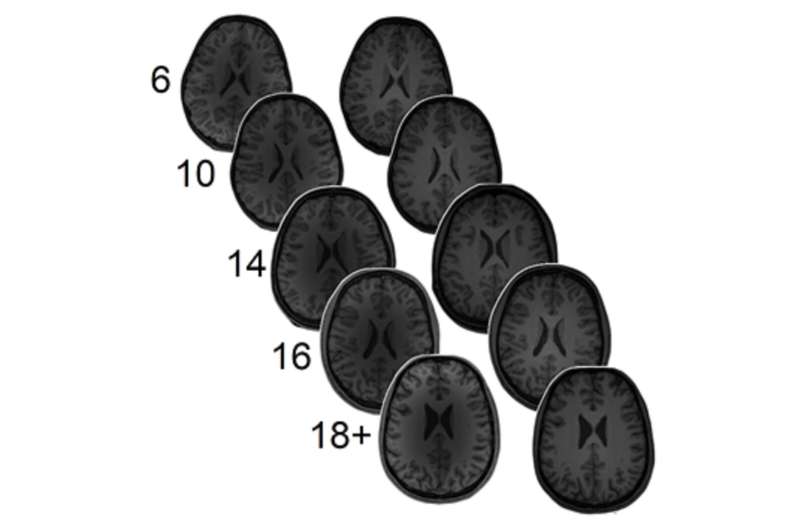Neurotransmitter levels predict math ability


The neurotransmitters GABA and glutamate have complementary roles—GABA inhibits neurons, while glutamate makes them more active. Published 22nd July in PLOS Biology, researchers led by Roi Cohen Kadosh and George Zacharopoulos from the University of Oxford show that levels of these two neurotransmitters in the intraparietal sulcus of the brain can predict mathematics ability. The study also found that the relationships between the two neurotransmitters and arithmetic fluency switched as children developed into adults.
Levels of brain excitement/inhibition are thought to be related to learning, especially during critical periods. However, little is known about how they are related to complex learning that can take place over decades. To address this issue, the researchers measured the levels of GABA and glutamate in 255 people, ranging from 6-year-olds to university students. The participants also took two math achievement tests, and their performance on the arithmetic problems were correlated with the GABA and glutamate levels.
The team found that among young people, higher GABA levels in the left intraparietal sulcus of the brain (a fold in the top, left, back part of the brain) were associated with greater math fluency, while the reverse was true for glutamate. In adults, the results were almost exactly opposite; low GABA concentrations were related to greater math fluency, and again, the reverse was true for glutamate. Because the participants were tested twice about 1.5 years apart, the researchers were also able to show that neurotransmitter levels at the time of the first test could predict math achievement at the later date.
Much of what we know about GABA, glutamate, and learning comes from rodent experiments in the lab, which cannot say anything directly about natural school-based skills such as mathematics that develop over time. This longitudinal study in humans will help researchers better understand the relationship between learning and brain plasticity, particularly during critical periods that might span years.
Source: Read Full Article




